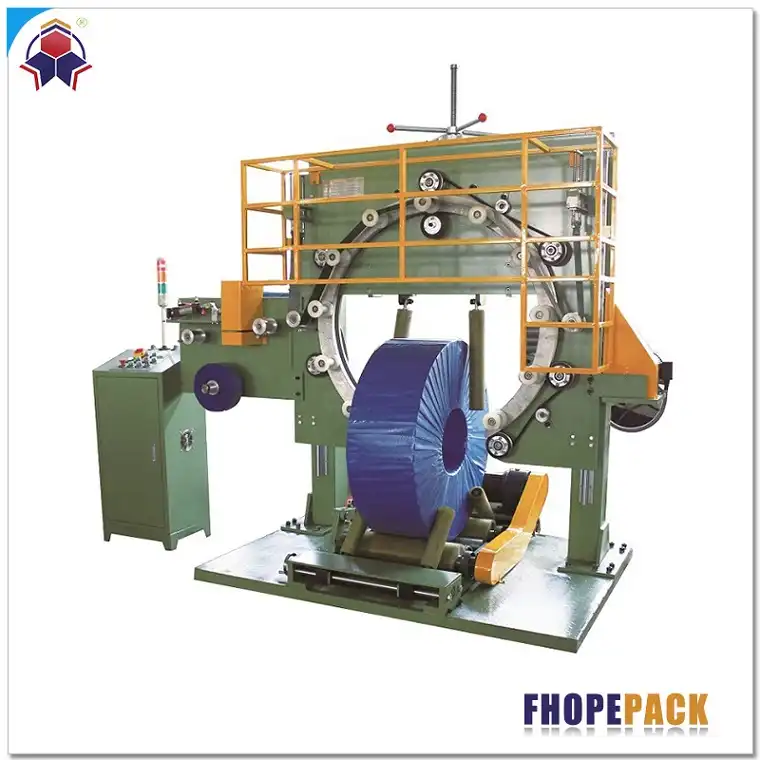“`html
The clatter of industry reverberates through the heart of any manufacturing facility. Machines, the silent giants, stand at attention—awaiting orders from their human counterparts. Among these mechanical titans lies the steel wire wrapping machine, an essential component in the landscape of modern manufacturing. But what does it take to install such a vital piece of machinery?
Understanding the installation requirements for a steel wire wrapping machine is not merely a technical necessity; it’s a journey into the core of industrial efficiency and precision. The seamless operation of these machines depends heavily on proper installation, influencing productivity and safety. As we delve deeper, the intricacies of setting up a steel wire wrapping machine reveal themselves, highlighting the need for meticulous preparation and expertise.
Claim: Proper installation of a steel wire wrapping machine is crucial for ensuring operational efficiency, safety, and longevity in industrial applications.
What Factors Influence the Installation Process?
1.1 Understanding the Basics of Installation Requirements
The installation process for a steel wire wrapping machine is influenced by several fundamental factors. Firstly, the spatial considerations of the facility must be evaluated. It requires ample space not just for the machine itself, but also for operator movement and maintenance activities. Additionally, understanding the machine’s power requirements is crucial. Most units necessitate a stable three-phase power supply with specific voltage and amperage ratings.
1.2 Spatial Considerations and Power Requirements

Before installing, assess the allocated space using the table below for dimension guidelines:
| Machine Type | Minimum Space Required (sq ft) | Power Supply (kW) |
|---|---|---|
| Small-scale | 150 | 15 |
| Medium-scale | 300 | 30 |
| Large-scale | 600 | 60 |
1.3 Insights into Environmental and Safety Conditions
The machine’s environment can significantly impact its performance. Temperature control and humidity regulation are vital to prevent material degradation and machine malfunction. Additionally, safety measures like emergency shutdown systems and protective barriers should be incorporated to shield operators from potential hazards.
1.4 Detailed Examination of Technical Specifications
Technical specifications play a pivotal role in the installation process. Each steel wire wrapping machine comes with unique requirements, necessitating a thorough examination of parameters such as tension settings and wrapping speed. Here’s a detailed breakdown:
| Specification | Description | Optimal Range |
|---|---|---|
| Tension Settings | Force applied to the wire during wrapping | 50-200 N |
| Wrapping Speed | Speed at which the wire is wrapped | 0.5-2 m/s |
1.5 Two-Fact Statement
Fact 1: Installing a steel wire wrapping machine in a controlled environment minimizes downtime and maintenance costs.
Fact 2: False: Overlooking power compatibility issues has no effect on machine performance. In reality, incorrect power settings can lead to frequent machine failures and increased energy consumption.
What Are the Technical Challenges During Installation?
2.1 Navigating Technical Challenges in Installation
Installation of a steel wire wrapping machine presents a series of technical challenges. These range from aligning components accurately to integrating the machine seamlessly within existing production lines. Addressing these challenges requires skilled technicians who understand both the mechanical and electronic aspects of the machine.
2.2 Integrating the Machine with Existing Systems

The integration process is facilitated by a step-by-step approach outlined in the table below:
| Step | Description |
|---|---|
| 1 | Survey existing systems for compatibility |
| 2 | Align mechanical components precisely |
| 3 | Test electronic integration protocols |
| 4 | Conduct trial runs to ensure full functionality |
2.3 Overcoming Installation Hurdles
To overcome installation hurdles, preemptive troubleshooting measures are vital. Regular consultations with the machine manufacturer can provide insights into common pitfalls, while maintaining an inventory of spare parts ensures minimal disruption during unforeseen challenges.
2.4 Conclusion: Key Insights and Takeaways
Ensuring a successful installation of a steel wire wrapping machine involves a blend of precise planning, technical know-how, and adaptability. By focusing on spatial arrangements, technical specifications, and seamless integration, businesses can optimize their operations and enhance safety standards. Here’s a summary of the key takeaways:
| Area | Key Insight | Actionable Takeaway |
|---|---|---|
| Spatial Planning | Allocate adequate space for operation and maintenance | Plan layout in advance to accommodate future expansions |
| Technical Specifications | Adhere strictly to manufacturer’s guidelines | Regularly update technical knowledge and training |
| System Integration | Ensure compatibility with existing systems | Engage skilled technicians for complex integrations |
Conclusion
In conclusion, the installation of a steel wire wrapping machine is more than a simple procedural task; it’s a foundational aspect of ensuring efficient industrial operations. With careful consideration of environmental, technical, and spatial factors, industries can harness the full potential of these machines. Claim: Through meticulous planning and precise execution, the installation of a steel wire wrapping machine can propel manufacturing efficiency to new heights, securing both productivity and safety in equal measure.
“`

